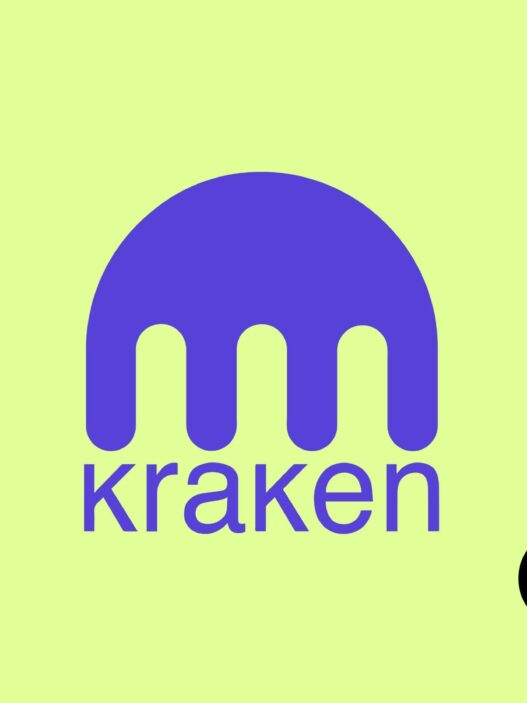The decentralized finance (DeFi) ecosystem, often heralded as the future of financial innovation, faced yet another stark reminder of its vulnerabilities on March 21, 2025. Zoth, an Ethereum-based real-world asset (RWA) restaking protocol, was hit by a devastating exploit that saw an attacker siphon off approximately $8.85 million in stablecoins. The breach, which unfolded with chilling precision, has sent shockwaves through the crypto community, reigniting debates about security, trust, and the sustainability of DeFi’s rapid growth. As details emerge, the incident paints a troubling picture of the risks lurking beneath the surface of even the most promising blockchain projects.
The Anatomy of the Zoth Hack
The exploit, first reported by outlets like Decrypt and 99Bitcoins, unfolded in a manner that has become all too familiar in the DeFi space: a compromised wallet, a malicious contract upgrade, and a swift extraction of funds. According to posts on X and subsequent analyses, the attacker gained control of Zoth’s deployer wallet—a critical administrative component responsible for managing the protocol’s smart contracts. With this access, the hacker upgraded the “USD0PPSubVaultUpgradeable” proxy contract, replacing it with a malicious version designed to drain the protocol’s reserves.
Once the contract was compromised, the attacker wasted no time. They withdrew $8.4 million to $8.85 million worth of USD tokens—Zoth’s native stablecoin tied to its RWA restaking framework. The stolen funds were quickly converted into DAI, another stablecoin, and then funneled into Ether (ETH), making it harder to trace as the loot dispersed across the Ethereum blockchain. The precision and speed of the attack suggest a well-prepared adversary, likely one with deep knowledge of Zoth’s architecture and the broader DeFi landscape.
While the exact entry point into the deployer wallet remains unclear at the time of writing, speculation abounds. Was it a phishing attack that tricked a team member into revealing private keys? A leak of credentials due to poor operational security? Or perhaps an insider job, as some X users have whispered? Zoth has yet to release an official statement detailing the root cause, leaving the community to piece together the narrative from on-chain data and early reports.
Zoth: A Rising Star in RWA Restaking
To understand the significance of this breach, it’s worth stepping back to examine what Zoth represents in the DeFi ecosystem. Launched as a protocol bridging real-world assets with Ethereum’s restaking capabilities, Zoth aimed to carve out a niche in the burgeoning RWA sector. By allowing users to tokenize and restake assets—essentially earning yield on staked positions tied to tangible value—Zoth positioned itself at the intersection of traditional finance and blockchain innovation.
The protocol’s USD stablecoin was a cornerstone of this vision, designed to maintain stability while offering users exposure to restaking rewards. Built on Ethereum, Zoth leveraged the network’s robust infrastructure and liquidity to attract a growing user base. While not as high-profile as giants like Aave or Compound, Zoth had begun to gain traction among DeFi enthusiasts and investors intrigued by the RWA narrative. Its promise of blending real-world utility with decentralized yield generation made it a project to watch—until this week’s catastrophe thrust it into the spotlight for all the wrong reasons.
A Timeline of Chaos
The hack unfolded in the early hours of March 21, 2025, Pacific Daylight Time, with the first signs of trouble detected by blockchain sleuths monitoring Ethereum transactions. Posts on X, including from accounts like @Securrtech and @CryptoniteUae, provided real-time updates as the exploit progressed. By 03:43 PDT, @Securrtech had outlined the attack methodology: compromise, upgrade, withdraw, and swap. Within hours, the scope of the loss became apparent—$8.85 million, a figure confirmed by Decrypt and echoed across other crypto news outlets like Ainvest and Cedirates.
The attacker’s movements were methodical. After extracting the USD tokens, they swapped them for DAI, a decentralized stablecoin issued by MakerDAO, before converting the haul into ETH. This multi-step process, while not foolproof against tracing, demonstrates an awareness of how to obscure funds in DeFi’s open ledger. Blockchain analytics firms like Chainalysis or Elliptic will likely be called upon to track the ETH as it moves through mixers or exchanges, but recovery remains a long shot—a grim reality for Zoth’s users and investors.
The Fallout: Community and Market Reactions
As news of the hack spread, the crypto community reacted with a mix of outrage, resignation, and cautious analysis. On X, sentiments ranged from sympathy for Zoth’s team to pointed critiques of DeFi’s recurring security woes. “Another day, another crypto hack,” lamented @99Bitcoins in a headline that captured the weary tone of many observers. Others, like @CosmicMetaZ, framed the incident as a “wake-up call” for the industry, urging projects to prioritize security over rapid deployment.
The financial impact on Zoth itself is still unfolding. With $8.85 million drained—potentially a significant portion of its total value locked (TVL)—the protocol’s viability hangs in the balance. Will it have the reserves to cover losses? Can it rebuild trust with its users? Early indications suggest that Zoth’s team is scrambling to respond, though no official statement had been issued by midday PDT on March 21. The silence has only fueled speculation, with some X users questioning whether the project can survive such a blow.
Broader market reactions have been muted so far, perhaps a sign of DeFi’s growing desensitization to exploits. Ethereum’s price showed no significant dip in the hours following the hack, and major stablecoins like DAI remained stable. However, for smaller RWA-focused protocols, the incident could cast a shadow, raising doubts about the security of restaking models and the risks of integrating real-world assets into DeFi’s experimental framework.
DeFi’s Security Problem: A Recurring Nightmare
The Zoth hack is not an isolated incident but rather the latest chapter in a long saga of DeFi exploits. In 2024 alone, platforms like Curve, Euler, and dozens of lesser-known projects lost hundreds of millions to attackers exploiting vulnerabilities in smart contracts, governance systems, and human error. The playbook is familiar: gain unauthorized access, manipulate a contract, drain funds, and disappear into the blockchain’s pseudonymity. Yet, despite years of lessons, the industry seems trapped in a cycle of innovation outpacing security.
At its core, the Zoth breach highlights a fundamental tension in DeFi: the trade-off between decentralization and control. Deployer wallets, like the one compromised in this case, are often centralized points of failure in otherwise decentralized systems. Upgradable contracts, while offering flexibility to fix bugs or add features, open the door to abuse if not properly secured. The attacker’s ability to hijack and modify the “USD0PPSubVaultUpgradeable” contract underscores this vulnerability—a single misstep in key management can unravel an entire protocol.
Experts have long warned about these risks. Audits, a standard practice in DeFi, can catch coding errors but often miss operational weaknesses like poor key management or phishing susceptibility. Zoth’s case raises uncomfortable questions: Did the team follow best practices for securing its deployer wallet? Were multi-signature (multisig) controls in place, or was access concentrated in a single point? Without an official post-mortem, the answers remain elusive, but the incident reinforces the need for robust security at every layer of a DeFi project.
Lessons from the Past, Shadows on the Future
The Zoth hack echoes previous high-profile breaches, offering a chance to reflect on what’s changed—and what hasn’t—in DeFi security. Take the 2021 Poly Network hack, where $610 million was stolen via a compromised private key, only for the attacker to return most of the funds in a bizarre twist. Or the 2022 Ronin Bridge exploit, which saw $625 million vanish due to a phishing attack on Axie Infinity’s team. In each case, human error or centralized control points proved the weak link, a pattern that Zoth now joins.
Yet, there’s a silver lining: the industry has made strides. Tools like hardware wallets, multisig setups, and decentralized governance are more widely adopted than ever. Insurance protocols like Nexus Mutual offer a safety net for users, though coverage remains limited. And community-driven efforts, such as bug bounties and white-hat hacking initiatives, have thwarted some attacks before they escalate. Could Zoth have benefited from these measures? Perhaps—but hindsight is a luxury the DeFi space rarely affords.
Looking ahead, the Zoth hack could spur renewed focus on security innovation. Projects may double down on immutable contracts, reducing reliance on upgradability, or adopt more rigorous key management protocols. Regulators, too, might take notice, using incidents like this to argue for stricter oversight of DeFi—a prospect that divides the crypto community between those who see it as inevitable and those who view it as anathema to the ethos of decentralization.
The Human Cost: Users Left in the Lurch
Beyond the technical and financial ramifications, the Zoth hack carries a human toll. For users who staked their assets in the protocol, the loss is more than just numbers on a screen—it’s savings, investments, and trust in a system that promised empowerment. DeFi’s ethos of “don’t trust, verify” feels hollow when verification fails to prevent catastrophe. While some may recover through community efforts or legal recourse, many will bear the brunt of this breach with little recourse.
The attacker, meanwhile, remains at large, their identity shrouded in the anonymity of the blockchain. Will they be caught? History suggests it’s unlikely. High-profile hackers like the Lazarus Group have evaded justice for years, laundering funds through mixers and unregulated exchanges. Zoth’s loot, now in ETH, could follow a similar path, disappearing into the digital ether while the community picks up the pieces.
A Call to Action for DeFi
As the dust settles on the Zoth exploit, the DeFi industry faces a reckoning. The promise of financial freedom and innovation cannot coexist with a cavalier approach to security. Projects must prioritize resilience over speed, investing in audits, stress tests, and user education. Developers should embrace transparency, sharing post-mortems and lessons learned to strengthen the ecosystem as a whole. And users, too, must take responsibility—vetting protocols, diversifying risks, and understanding the trade-offs of cutting-edge technology.
For Zoth, the road ahead is uncertain. A swift response—compensating users, securing the protocol, and rebuilding trust—could salvage its reputation. But silence or mismanagement risks relegating it to the graveyard of failed DeFi experiments. The broader RWA sector, still in its infancy, will be watching closely, as will Ethereum’s DeFi faithful.
In the end, the Zoth hack is more than a headline—it’s a mirror held up to DeFi’s ambitions and shortcomings. At $8.85 million, the cost is steep, but the lessons could be priceless. Whether the industry heeds them remains to be seen. For now, as the blockchain ticks on, one truth is clear: in DeFi, innovation without security is a gamble—and the house doesn’t always lose.






















